
Robbie Phillips has made the third ascent of Dave MacLeod's 2001 route Achemine (E9 6c) E9 6c at Dumbarton Rock near Glasgow. The line was Scotland's first of the grade and only received its second ascent by visiting Austrian climber Babsi Zangerl in 2016.
Having initially planned to go trad climbing somewhere further afield, the weather caused Robbie and his climbing partner Culann to shift their focus to Dumbarton. Robbie told UKC:
'I hadn't actually been to Dumby in a few years so it was nice to get back there after a long hiatus. Achemine hadn't really been on my radar but I'd always wanted to do Chemin de Fer, a notoriously hard E5 that takes the leftwards-leaning crack, and Achemine is the direct finish.'
After onsighting Chemin de Fer, Robbie lowered down the face of Achemine to scope out the holds. He said:
'They all seemed to be there and it really just needed a bit of a scrub to clean up some of the dirty film that grows over the holds when they haven't been looked at in a while. I had a short top-rope go on it that evening and it felt hard but doable with a bit of practice.'
The pair returned a couple of days later and Robbie worked it on a shunt for a couple of hours. He consolidated the beta and top-roped it again, this time managing to climb it until the very last move before falling off pumped. He explained:
'I realised that there was no excuse now not to try it on lead, so after a rest day I came back and went for it. My first go up I got nervous, I was mid-way through the crux, but was struggling to keep the rope from going under my leg - although the fall is relatively safe, if you get flipped upside down, it would be very dangerous - so I just jumped off to test the fall. The fall was clean and I felt my confidence grow, so I went all-out on my next attempt and managed to do it albeit not without a good fight and by skipping the last move by dynoing for the top of the crag!'
Commenting on the line's quality and fierce reputation, Robbie told UKC:
'The climbing style was awesome, coming from the crack of Chemin which warms you up well, you then have a sequency boulder crux which requires you to keep your body close to the wall like a gecko. The holds are generally positive but face awkwardly in the wrong direction meaning that keeping the body position to hold them is challenging - it requires finding the perfect balance and maintaining strong core body tension throughout so as not to lose your balance as that could easily result in a fall.'
One climber had previously informed Robbie that the difficulty was ~8c and a death fall from the crux had been mooted. Forutnately, Robbie realised on his first day on it that this wasn't the case. He explained:
'The fall is fairly big - you're maybe 5-6m run-out going to the last hold, but in reality you've also climbed about 20-25m by that point, so you're not going to hit anything if you fall. The main worry is making sure the rope doesn't go under your leg, which is actually quite tricky to do when climbing hard! The actual technical difficulty of the climbing felt more akin to 8b sport climbing - imagine doing a 7b into a long 7B+ boulder problem.'
Robbie followed a slightly different sequence to Dave's original method at the crux, instead opting for a direct method used by Babsi Zangerl. He told UKC:
'When I spoke to Dave about it prior to trying it he'd told me that the way he'd originally climbed it went further right than what Babsi Zangerl had done. Upon inspection, I could see what Dave had done, which I don't think adds any more moves, but they are a bit harder I believe. I didn't put much effort into this sequence as I found the direct method easier. Dave's method takes my right hand press as a left hand sidepull and reaches out right to a juggier sidepull, then the crux is moving up and matching a two-sided sharp edge that I avoided by doing the more direct method.'
Regarding the comparative difficulty of the two methods, he continued:
'I believe both methods to be adequate for the grade of E9, and even compared with others at that grade I've done I'd say this is one of the harder ones. It's not really a different climb, just a different sequence, and although Dave's method is the original, Dave and I both agreed that the more direct beta is more logical.'
Robbie hopes that this ascent will spur more attempts at the line, which sees relatively little attention. He explained:
'I've found reputations and preconceptions to be a poor method for getting an idea of a climb, as I've often found them to be completely wrong. Achemine - for all intents and purposes - is a safe trad route with a hard, bouldery crux at the top, and there's really no reason why it shouldn't have more repeats as there are many capable local climbers. Hopefully it will get more ascents now the myth behind it has been debunked.'
























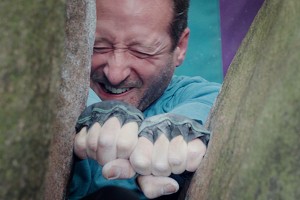
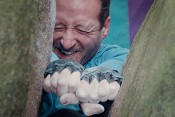
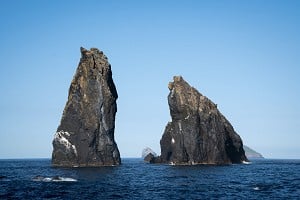
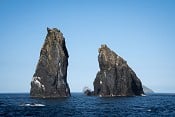
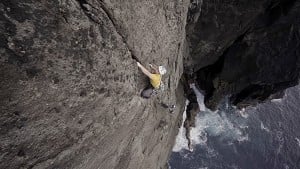

Comments
That is awesome news - congrats Robbie
Nice one Robbie. Break out the buckie.
The onsight of Chemin de Fer is not to be sniffed at either!
Nice one, saw him being filmed on Chemin de Fer on 2/10 so this will hopefully be hitting YouTube soon.
Very impressive. Sounds like a pretty quick ascent all told. It seems as though he's got his finger out at last :) but then I didn't realise he'd done other E9s - which ones?